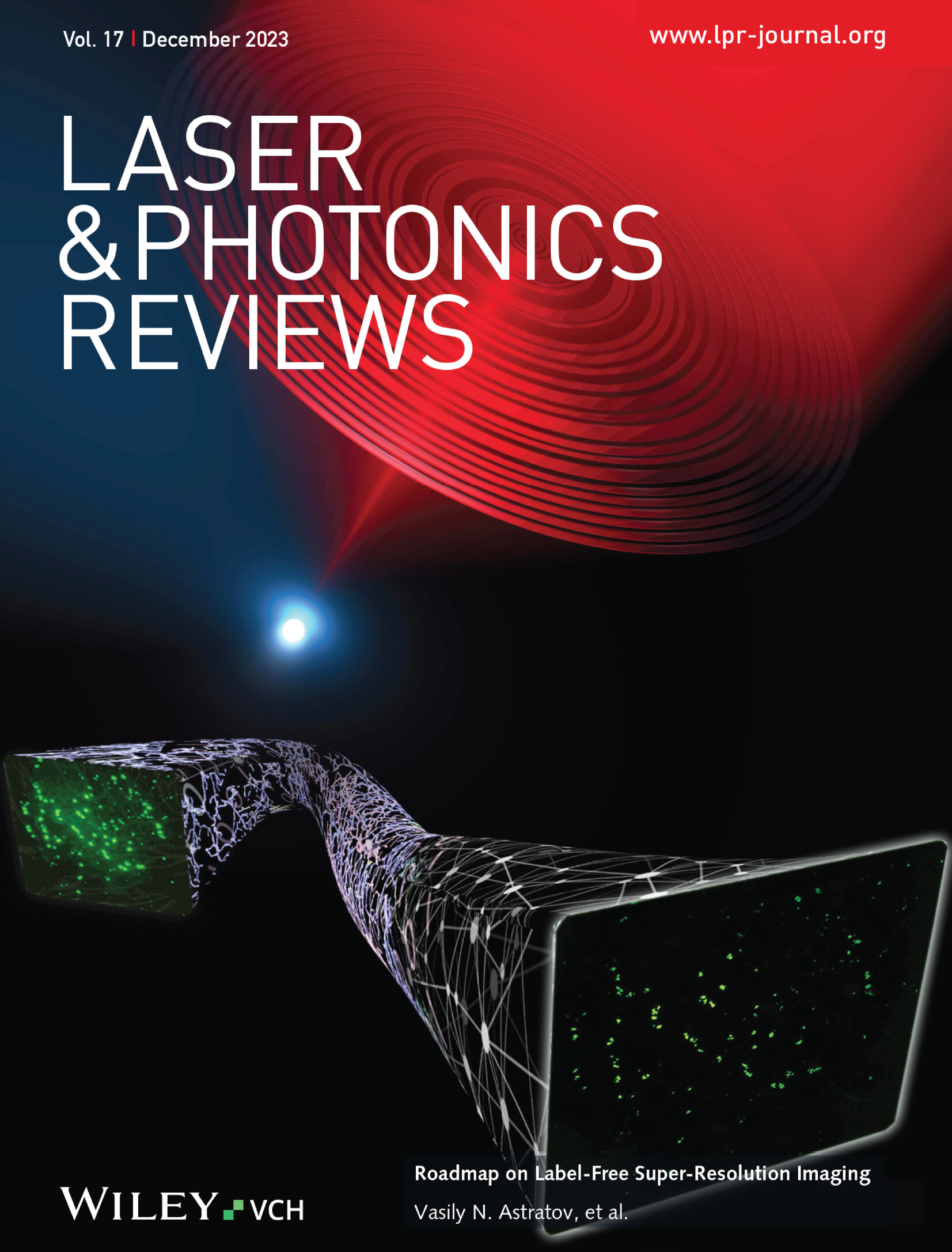室温下斜率效率为36%,100k下斜率效率为61%的黄色Tb:YLF激光器的温度依赖光谱和激光性能
IF 9.8
1区 物理与天体物理
Q1 OPTICS
引用次数: 0
摘要
提出了一种高效的低温和室温黄色和低温红色Tb3+:LiYF4激光器,并详细分析了该增益介质从室温到液氦温度的相关温度依赖光谱特性。从室温冷却到78 K时,在486 nm处青色-蓝色泵浦带的峰吸收截面显著增加,黄色的峰发射截面增加了五倍,而荧光寿命略有增加。改进后的激光晶体生长过程使其在587.4 nm处的室温斜率效率提高了36%。在100 K时,获得了高达61%的斜率效率,在581.4 nm波长处获得了55%的光对光效率,是之前报道的黄色Tb3+:LiYF4激光器的两倍,并使该系统成为迄今为止最有效的黄色激光源。在这些实验中,也实现了624 nm的连续波激光工作,在78 K下斜率效率为47%。该研究增强了对目前限制Tb3+激光器室温性能的过程的理解,这有助于通过定制增益材料提高激光性能,即使在可达到珀尔帖冷却的温度范围内。本文章由计算机程序翻译,如有差异,请以英文原文为准。
Temperature‐Dependent Spectroscopy and Laser Performance of Yellow Tb:YLF Lasers with 36% Slope Efficiency at Room Temperature and 61% at 100 K
An efficient cryogenic and room‐temperature yellow and cryogenic red Tb3+ :LiYF4 laser is presented and a detailed analysis of the relevant temperature‐dependent spectroscopic properties from room temperature to liquid helium temperature for this gain medium is provided. Cooling from room temperature to 78 K increases the peak absorption cross sections in the pump band at 486 nm in the cyan‐blue significantly and the peak emission cross sections in the yellow by a factor of five, while slightly increasing the fluorescence lifetime. An improved growth procedure of the laser crystal enables an increased room‐temperature slope efficiency of 36% at 587.4 nm. At 100 K, slope efficiencies of up to 61% are obtained and optical‐to‐optical efficiencies of 55% at a wavelength of 581.4 nm, doubling all values previously reported for yellow Tb3+ :LiYF4 lasers and establishing this system as the most efficient yellow laser source to date. During these experiments, continuous‐wave laser operation at 624 nm is realized as well with a slope efficiency of 47% at 78 K. The study enhances the understanding of the processes currently limiting the room‐temperature performance of Tb3+ lasers, which facilitates improved laser performance by tailored gain materials even in the temperature range accessible to Peltier cooling.
求助全文
通过发布文献求助,成功后即可免费获取论文全文。
去求助
来源期刊
CiteScore
14.20
自引率
5.50%
发文量
314
审稿时长
2 months
期刊介绍:
Laser & Photonics Reviews is a reputable journal that publishes high-quality Reviews, original Research Articles, and Perspectives in the field of photonics and optics. It covers both theoretical and experimental aspects, including recent groundbreaking research, specific advancements, and innovative applications.
As evidence of its impact and recognition, Laser & Photonics Reviews boasts a remarkable 2022 Impact Factor of 11.0, according to the Journal Citation Reports from Clarivate Analytics (2023). Moreover, it holds impressive rankings in the InCites Journal Citation Reports: in 2021, it was ranked 6th out of 101 in the field of Optics, 15th out of 161 in Applied Physics, and 12th out of 69 in Condensed Matter Physics.
The journal uses the ISSN numbers 1863-8880 for print and 1863-8899 for online publications.

 求助内容:
求助内容: 应助结果提醒方式:
应助结果提醒方式:


